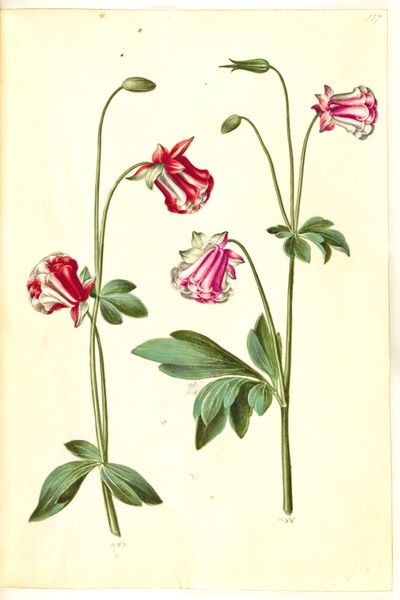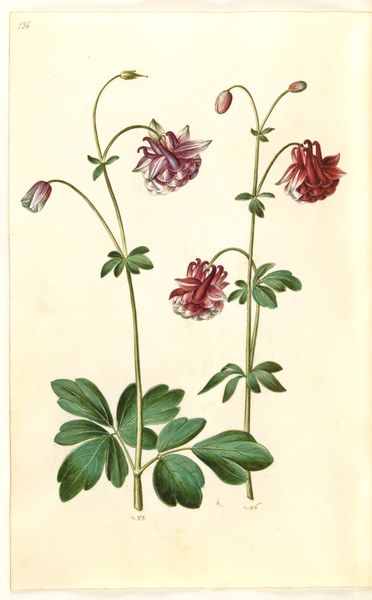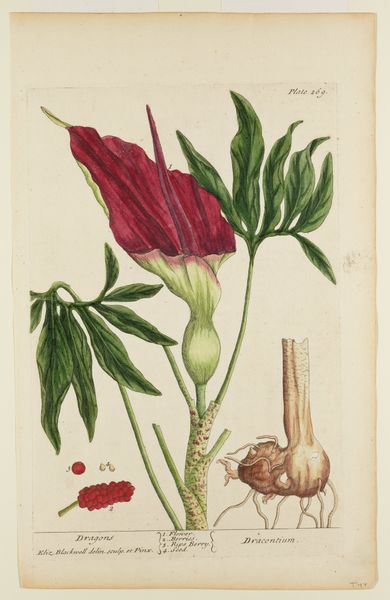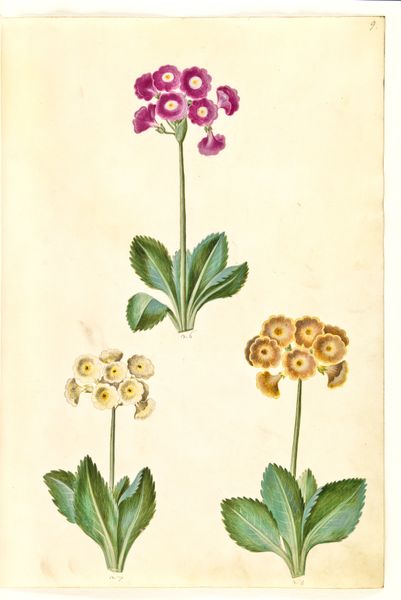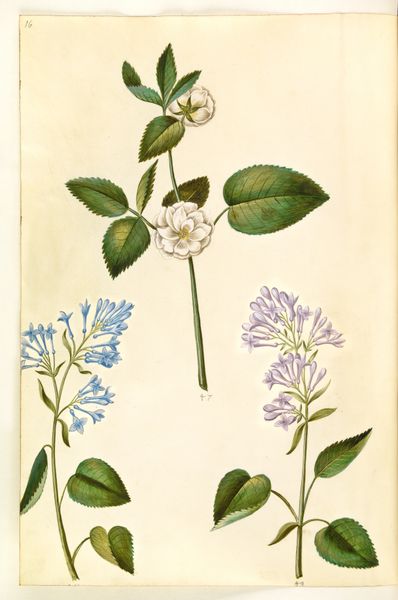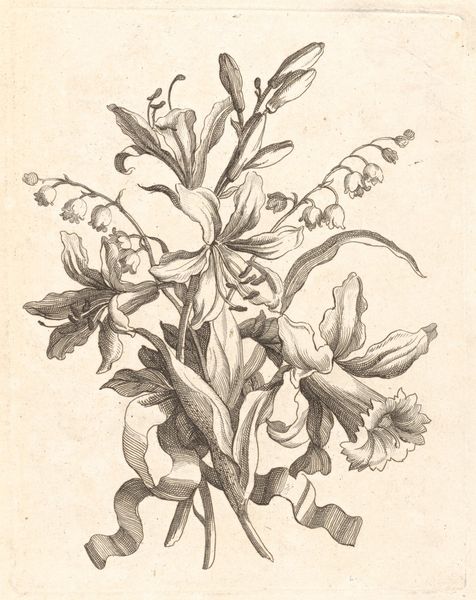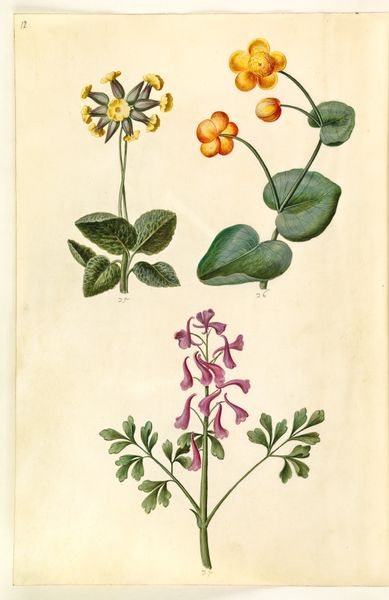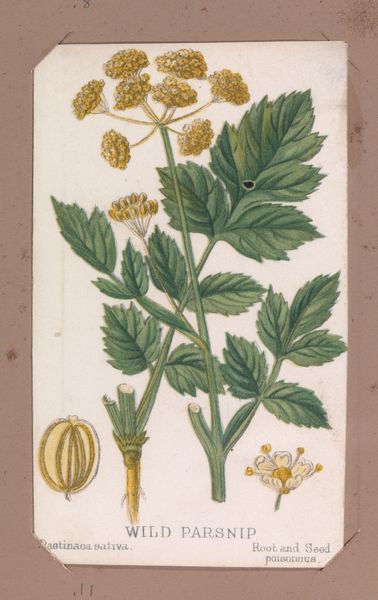
hand-colored-etching, print, etching, paper, watercolor
#
hand-colored-etching
# print
#
etching
#
botanical illustration
#
paper
#
watercolor
#
botanical art
#
watercolor
Dimensions: 14 3/4 x 10 1/8 in. (37.47 x 25.72 cm) (plate)18 13/16 x 14 1/8 in. (47.78 x 35.88 cm) (sheet)
Copyright: Public Domain
Curator: This print, "La Digitale (Foxglove)," created by Nicolas François Regnault in 1774, presents us with an intricate hand-colored etching, highlighting the botanical precision prized during the Enlightenment. Editor: My first impression is its striking clarity, a scientific rendering imbued with a gentle, almost melancholic beauty. The crimson blossoms seem to droop, heavy with secrets. Curator: Precisely. Note how Regnault uses etching to delineate the veins in the leaves and the subtle gradations of color in the foxglove bells. The scientific detail is prioritized; the composition supports analytical investigation. Editor: Yet, the history of the foxglove itself is fascinating. It’s both a source of potent medicine, digitalis, and a deadly poison, readily available to apothecaries of the time. Does this duality, this power to heal or harm, subtly inform Regnault’s rendering? Curator: It's certainly valid to speculate. Formally, I am compelled by the organization of elements across the flat plane of the picture—details distributed to activate specific locations as if elements in a taxonomic diagram. The chromatic values appear subdued yet precise, suggesting objective fidelity above artistic indulgence. Editor: Agreed, but one must acknowledge that these botanical illustrations were crucial in the exchange of knowledge and cultivation between Europe and its colonies. This foxglove isn't just an aesthetic object; it is intertwined with botanical colonialism and nascent pharmaceutical industries. These images actively shape how knowledge is disseminated and controlled. Curator: Your point on colonialism adds layers of significance, illustrating that art functions within a broader societal and intellectual context. It forces one to contemplate that this detailed representation of a seemingly simple flower held implications for the medical practices and potentially, colonial powers of the era. Editor: Ultimately, analyzing artwork requires us to not just study their aesthetic properties, but investigate the web of historical significance that binds them. The careful handwork in "La Digitale" is not simply descriptive, it participates within systems of knowing and doing that directly effect our societies.
Comments
No comments
Be the first to comment and join the conversation on the ultimate creative platform.
